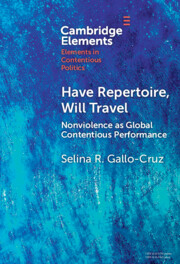Element contents
Have Repertoire, Will Travel
Published online by Cambridge University Press: 12 March 2024
Summary
- Type
- Element
- Information
- Series: Elements in Contentious PoliticsOnline ISBN: 9781009484015Publisher: Cambridge University PressPrint publication: 04 April 2024



